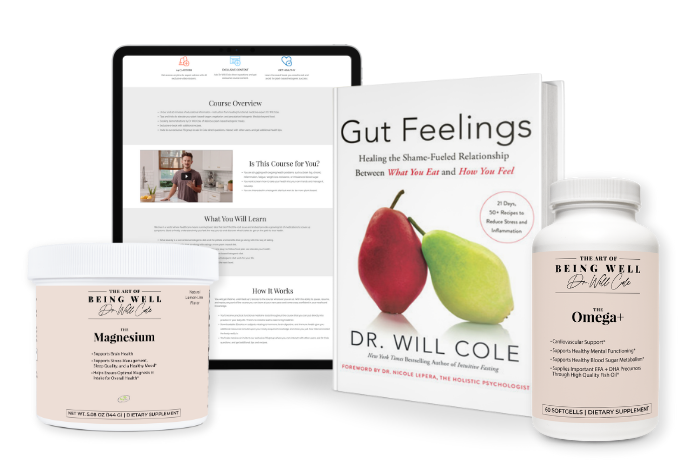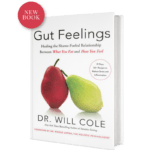Is Mold Toxicity Affecting Your Health? The Sneaky Symptoms To Watch Out For + How To Start Healing Naturally

This year more than any other year, I’ve seen a rise in mold-related health problems among my patients. I’ve seen person after person suffering from newfound fatigue, brain fog, or chronic allergic symptoms like a runny nose or wheezing. And after careful testing and evaluation, for many of them, mold ended up being the culprit.
What’s to blame for all these mold issues I’m seeing? Interestingly, the explanation doesn’t lie with the mold itself. Instead, it’s the amount of time we’re spending near it.
What do I mean by that? We’ve all been at home! This year most of us have spent more time indoors in our houses and apartments than ever before in our lives. We set up at-home gyms, at-home offices, and at-home schools and daycares. We spent our days in the same room and if those rooms had mold, it became the perfect storm for mold toxicity problems.
ARTICLE CONTINUES BELOW
What are mold-related health issues?
Mold is a type of fungus that’s earned a scary reputation over the years. It’s found in the air, in our environment, and it’s often hiding behind our walls, under our floors, or in the ceiling. Basically, anywhere there’s high moisture, there's mold. Mold toxicity can seem like something to avoid at all costs and banish from our ecosystem, but the reality is that it’s all around us and the vast majority of the time, it causes no issues.
Sometimes, however, we develop a mold sensitivity issue, which can trigger a chronic inflammatory response called “chronic inflammatory response syndrome,” or CIRS. This typically happens when something is out of balance with our body — leading our immune system to get confused and react to mold toxicity — or when we are exposed to too much mold for too long, which has been the case for many of us this year.
What are the signs of a mold toxicity issue?
Mold toxicity issues often go undiscovered for months or even years. Why? Because CIRS can cause a range of vague health issues that can be hard to describe. As a result, many people get diagnosed with allergies, depression, chronic fatigue, or another condition that has overlapping symptoms. So what are the symptoms? They can be any combination of the below:
- Brain fog
- Worsening asthma and/or allergies
- New or worsening anxiety, depression, mood swings
- Poor memory
- Unexplained weight gain or weight loss
- Vertigo or dizziness
- Ringing in the ears
- Extreme fatigue
- Unexplained muscle pain
As you can guess, the average person might experience any of the above and not think much of it. That’s why it’s important to work with a qualified health expert that is trained to look for the underlying cause. That’s exactly what I do in my functional medicine clinic.
It's important to also consider the role that gene variants play in mold. Two HLA gene variants, HLA-DRB1 and HLA-DQB1, have been found to mean an increased susceptibility to mold exposure and mold-related health issues (1).
How do you treat mold toxicity issues?
If you think mold toxicity might bethe root cause of your symptoms, there are a few steps you can take next. Each case is different, and I focus on creating a personalized mold treatment plan in my office, but here’s where to start.
1. Get an inspection
If you think you have a mold issue in your home, you might think that the first step is to go to a doctor. But actually, a doctor will likely need you to get your home inspected in order to make a diagnosis! As we saw earlier, the symptoms of mold toxicity and exposure can vary greatly and could be caused by other factors — it helps if you are able to point to the exact source of exposure. To find someone to do the inspection, check out this online directory from the National Organization of Remediators and Mold Inspectors.
2. Get a diagnosis
Getting a diagnosis sounds simple, but not all doctors are trained to spot mold issues or diagnose them even if they are suspected. I recommend three types of tests — mycotoxin tests, blood tests, and visual contrast sensitivity tests — which you can read about here.
3. Eliminate your exposure as much as possible
If you’ve gotten a diagnosis and found the source of the mold, it’s pretty obvious that you’d want to quickly eliminate any exposure to that mold. But environmental exposure isn’t the only source of mold that we regularly encounter! It can also be found in certain foods, like grains, wine and beer, coffee and tea, and nuts and dried fruits. I recommend eliminating high-mold foods during your recovery process to make sure all sources of mold are avoided in order to speed up your recovery.
4. Supplement with key nutrients
There’s no cut and dry treatment for the inflammation caused by mold, so I start out by recommending nutrients that can help support the body’s ability to recover from mold exposure. The best next step is to support your body’s ability to recover from mold exposure. This can vary person to person depending on what symptoms the mold toxicity is causing, but here are three that I often recommend.
- Glutathione: Known as the “master antioxidant,” glutathione helps your body increase its production of other antioxidants that fend off cellular damage and disease. Studies have shown that mold can dampen your glutathione levels, so taking it in supplement-form can help you boost your body’s natural defenses. (2)
- Nicotinamide riboside (NR): You may have heard of NAD+, a coenzyme that is present in every cell in your body and helps bolster hundreds of bodily functions, including many that are involved in recovering from mold. Many people take a form of B3, called NR, to boost NAD+ to fend off the signs of aging, keep their energy levels up, and maintain good cognition.
- Binders: There is a group of nutrients called binders that help “bind” to toxins and eliminate them from your body. Two good examples are activated charcoal and clay. To learn more about charcoal, read my article all about it.
5. Invest in high-quality air filters
Did you know that indoor air pollution can be worse than outdoor air pollutants?
The EPA says that the level of pollutants indoors are on average 2 to 5 times higher than outdoor levels, and in some cases these levels can exceed 100 times that of outdoor levels of the same pollutants! Mold is one reason for this, so it’s a great idea to invest in a high quality HEPA air filter for your home. You can either add it to your HVAC system or get standing units for the rooms you spend the most time in. This is especially true if you spend a lot of time at home and indoors. Click here to save $280 on my favorite air filter, AirDoctor.
The past year has brought a long list of unique and unexpected challenges, and a rise in mold-related health issues is just one of them! The good news is that the more you know, the easier they are to spot and the quicker you can get back to feeling 100%.
For further reading on mold, check out my articles on the top signs of mold exposure, exactly where mold can be hiding in your home, and the top foods most likely to contain mold.
If you think you are suffering from mold toxicity and want to finally achieve the health you deserve, set up a telehealth consultation! As one of the first functional medicine telehealth clinics in the world, we provide webcam health consultations for people around the globe.
Photo: unsplash.com
Read Next: 11 Effective, Natural Remedies For Treating Lyme Disease
Start Your Health Journey Today
FUNCTIONAL MEDICINE CONSULTATIONS FOR PEOPLE AROUND THE WORLD
References:
- Knutsen AP, Vijay HM, Kumar V, Kariuki B, Santiago LA, Graff R, Wofford JD, Shah MR. Mold-sensitivity in children with moderate-severe asthma is associated with HLA-DR and HLA-DQ. Allergy. 2010 Nov;65(11):1367-75. doi: 10.1111/j.1398-9995.2010.02382.x. Epub 2010 Jun 16. PMID: 20486920.
- Guilford FT, Hope J. Deficient glutathione in the pathophysiology of mycotoxin-related illness. Toxins (Basel). 2014;6(2):608-623. Published 2014 Feb 10. doi:10.3390/toxins6020608
View More At Our Store
Purchase personally curated supplements
and Dr. Will Cole’s books!

The information on this website has not been evaluated by the Food & Drug Administration or any other medical body. We do not aim to diagnose, treat, cure or prevent any illness or disease. Information is shared for educational purposes only. You must consult your doctor before acting on any content on this website, especially if you are pregnant, nursing, taking medication, or have a medical condition.
Our content may include products that have been independently chosen and recommended by Dr. Will Cole and our editors. If you purchase something mentioned in this article, we may earn a small commission.

BY DR. WILL COLE
Dr. Will Cole, DNM, IFMCP, DC is a leading functional medicine expert who consults people around the globe, starting one of the first functional medicine telehealth centers in the world. Named one of the top 50 functional and integrative doctors in the nation, Dr. Will Cole provides a functional medicine approach for thyroid issues, autoimmune conditions, hormonal imbalances, digestive disorders, and brain problems. He is also the host of the popular The Art of Being Well podcast and the New York Times bestselling author of Intuitive Fasting, Ketotarian, Gut Feelings, and The Inflammation Spectrum.

Gut Feelings
Healing The Shame-Fueled Relationship
Between What You Eat And How You Feel


